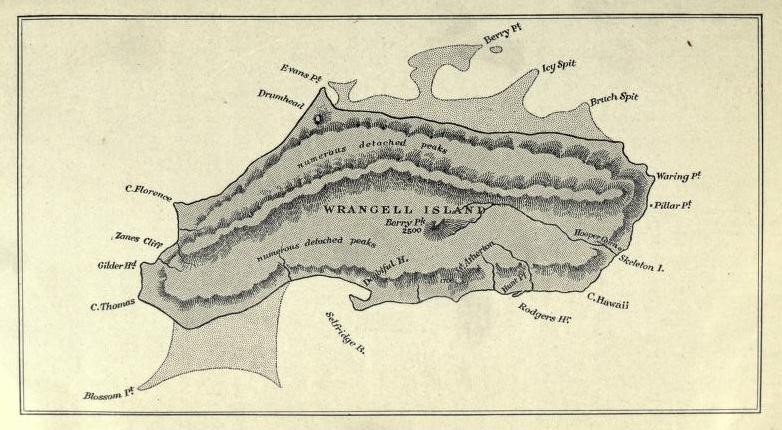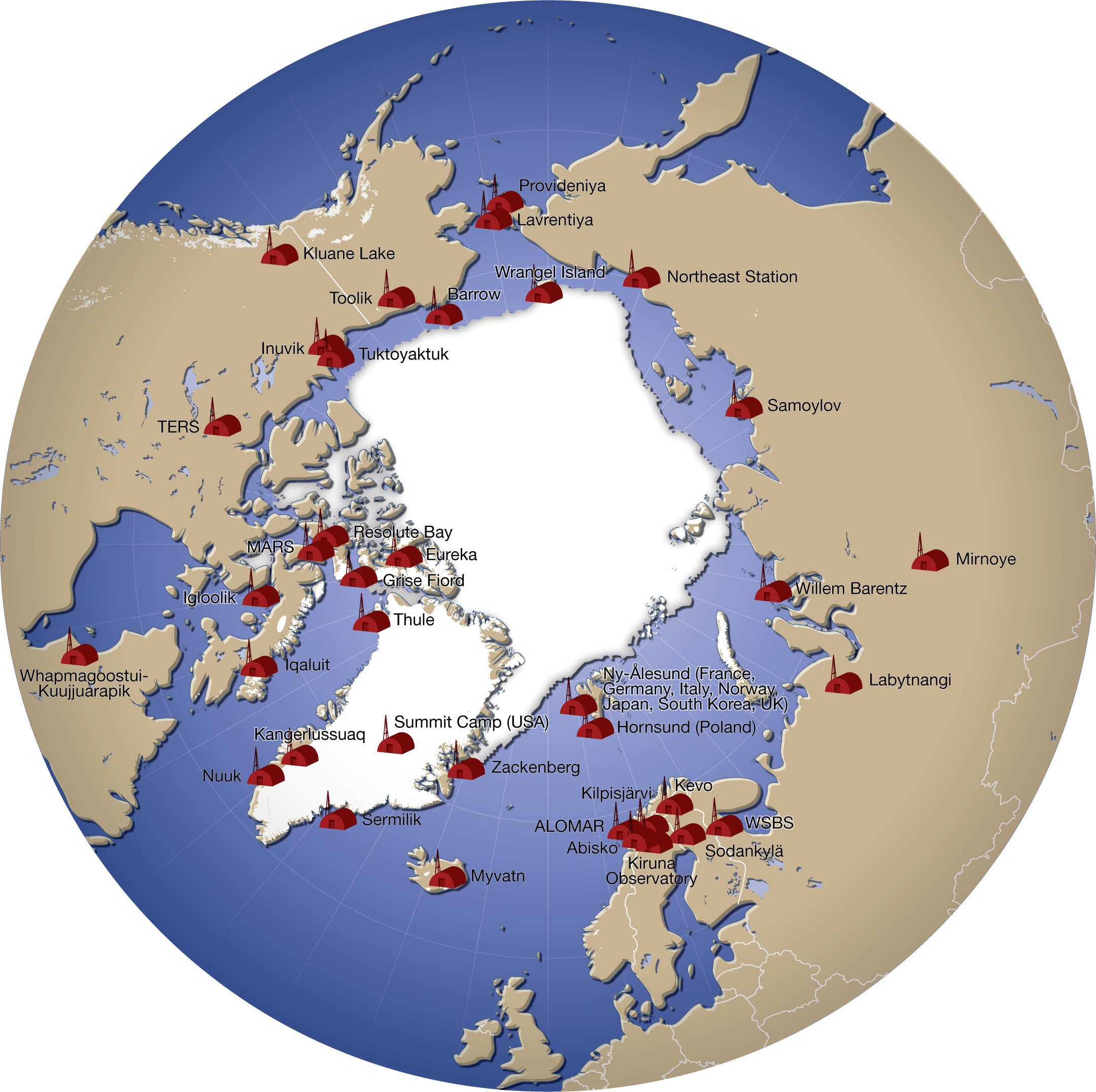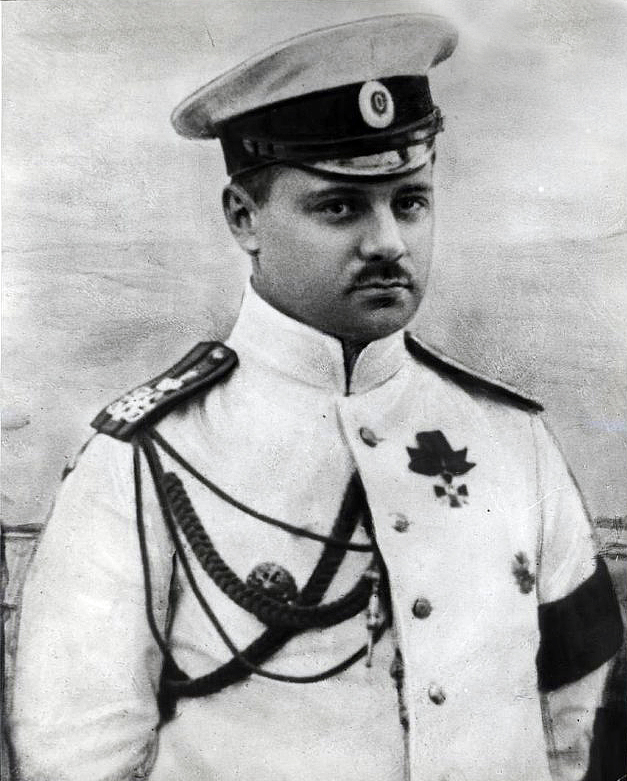|
Blossom Point
Blossom Point (russian: Мыс Блоссом), also known as "Cape Blossom", is a headland of Wrangel Island. Administratively it belongs to the Chukotka Autonomous Okrug, Russian Federation. There are walruses and polar bears in the area of the cape. History This headland marks the northern border between the East Siberian Sea and the Chukchi Sea. Located south of Cape Thomas, it is the westernmost point of Wrangel Island and the point closest to the Siberian mainland. Blossom Point was named in 1881 by USS ''Rodgers''' Lieutenant Robert M. Berry in honor of HMS ''Blossom'', on which the expedition led by Frederick William Beechey surveyed the Chukchi Sea in 1828.Leontiev V.V. , Novikova K.A. ''Toponymic Dictionary of the North-East of the USSR'' / scientific. ed. G. A. Menovschikov ; FEB AN USSR . North-East complex. Research institutes. Lab archeology, history and ethnography. - Magadan: Magad. Prince Publishing House , 1989 . In 1911, during the Arctic Ocean Hydrogra ... [...More Info...] [...Related Items...] OR: [Wikipedia] [Google] [Baidu] |
Headland
A headland, also known as a head, is a coastal landform, a point of land usually high and often with a sheer drop, that extends into a body of water. It is a type of promontory. A headland of considerable size often is called a cape.Whittow, John (1984). ''Dictionary of Physical Geography''. London: Penguin, 1984, pp. 80, 246. . Headlands are characterised by high, breaking waves, rocky shores, intense erosion, and steep sea cliff. Headlands and bays are often found on the same coastline. A bay is flanked by land on three sides, whereas a headland is flanked by water on three sides. Headlands and bays form on discordant coastlines, where bands of rock of alternating resistance run perpendicular to the coast. Bays form when weak (less resistant) rocks (such as sands and clays) are eroded, leaving bands of stronger (more resistant) rocks (such as chalk, limestone, and granite) forming a headland, or peninsula. Through the deposition of sediment within the bay and the erosion of the ... [...More Info...] [...Related Items...] OR: [Wikipedia] [Google] [Baidu] |
HMS Blossom (1806)
HMS ''Blossom'' was an 18-gun sloop-of-war. She was built in 1806 and is best known for the 1825–1828 expedition under Captain Beechey to the Pacific Ocean. She explored as far north as Point Barrow, Alaska, the furthest point into the Arctic any non-Inuit had been at the time. She was finally broken up in 1848. Napoleonic Wars On 26 February 1808 ''Blossom'' was in company with when they captured ''Sally and Hetty'', William Fleming, Master. ''Blossom'' was in company with ''Jamaica'' when they recaptured the American brig ''Iris''. In the mid-morning of 23 February 1812, ''Blossom'' was off Cabrera when a strange schooner sailed towards her, mistaking her for a merchantman. When the schooner realized her mistake a five-hour chase followed before ''Blossom'' was able to capture the schooner . ''Jean Bart'' was of 147.5 tons (bm) and had been launched in Marseilles only five weeks earlier. She was armed with five 12 and two 6-pounder guns, and had a crew of 106 men ... [...More Info...] [...Related Items...] OR: [Wikipedia] [Google] [Baidu] |
Waring Point
Waring Point (russian: Мыс Уэринг) is a headland of the Chukchi Sea. Administratively, it belongs to the Chukotka, Russian Federation. It is the easternmost point of Wrangel Island. This headland was named in 1881 after Lieutenant Waring of USS Rodgers, commanded by Lieutenant Robert M. Berry. Lt. Waring was the first to land at this point. Very large numbers of birds are nesting on the cliffs of this cape, including the horned puffin, tufted puffin, thick-billed murre, glaucous gull and pelagic cormorant The pelagic cormorant (''Urile pelagicus''), also known as Baird's cormorant or violet-green cormorant, is a small member of the cormorant family Phalacrocoracidae. Analogous to other smallish cormorants, it is also called the pelagic shag occasi ....Belikovich A.V., Galanin A.V., Afonina O.M., Makarova I.I. ''Plant world of specially protected territories of Chukotka''. BSI FEB RAS (2006) References External links * Wrangel Island Headlands of Chukotka A ... [...More Info...] [...Related Items...] OR: [Wikipedia] [Google] [Baidu] |
List Of Research Stations In The Arctic
A number of governments maintain permanent research stations in the Arctic. Also known as Arctic bases, polar stations or ice stations, these bases are widely distributed across the northern polar region of Earth. Historically few research stations have been permanent. Most of them were temporary, being abandoned after the completion of the project or owing to lack of funding to continue the research. Some of these were military or intelligence stations (listening posts) created as a result of the proximity of the U.S. and Soviet Union to each other's landmass across the polar region. Ice stations are constructed on land or on ice that rests on land, while others are drifting ice stations built on the sea ice of the high latitudes of the Arctic Ocean. Research stations Drifting ice stations *Fletcher's Ice Island, US (1952 - 1978) In fiction *Ice Station Zebra (novel), by Alistair MacLean **Ice Station Zebra (1968 film) **Ice Station Zebra a song by Jack White on Boar ... [...More Info...] [...Related Items...] OR: [Wikipedia] [Google] [Baidu] |
Wrangel Mamenmap
Wrangel or Wrangell is a Germanic surname. Notable people with the surname include: * Wrangel family, or Wrangell, a Baltic German noble family, including a list of notable family members *Basil Wrangell (1906–1977), Italian film and television editor and director *Herman Wrangel ( 1585–1643), Swedish military officer and politician *Carl Gustaf Wrangel (1613–1676), Swedish statesman and military commander *Carl Henrik Wrangel (1681–1755), officer of the Swedish Army *Ferdinand von Wrangel (1797–1870), Baltic German explorer and seaman *Friedrich Graf von Wrangel (1784–1877), Prussian general *Hakon Magne Valdemar Wrangell (1859–1942), Norwegian ship owner and politician *Hedda Wrangel (1792–1833), Swedish composer *Herman Wrangel (diplomat) (1857–1934), Swedish diplomat *Herman Wrangel (1859–1938), senior officer in the Swedish Coastal Artillery * Margarete von Wrangell (1877–1932), Baltic German agricultural chemist and professor *Olaf von Wrangel (1928� ... [...More Info...] [...Related Items...] OR: [Wikipedia] [Google] [Baidu] |
Russian Empire
The Russian Empire was an empire and the final period of the Russian monarchy from 1721 to 1917, ruling across large parts of Eurasia. It succeeded the Tsardom of Russia following the Treaty of Nystad, which ended the Great Northern War. The rise of the Russian Empire coincided with the decline of neighbouring rival powers: the Swedish Empire, the Polish–Lithuanian Commonwealth, Qajar Iran, the Ottoman Empire, and Qing China. It also held colonies in North America between 1799 and 1867. Covering an area of approximately , it remains the third-largest empire in history, surpassed only by the British Empire and the Mongol Empire; it ruled over a population of 125.6 million people per the 1897 Russian census, which was the only census carried out during the entire imperial period. Owing to its geographic extent across three continents at its peak, it featured great ethnic, linguistic, religious, and economic diversity. From the 10th–17th centuries, the land ... [...More Info...] [...Related Items...] OR: [Wikipedia] [Google] [Baidu] |
Icebreaker Vaygach
Icebreaker ''Vaygach'' (russian: Вайгач) was an icebreaking steamer of moderate size built for the Russian Imperial Navy at St. Petersburg in 1909. She was named after Vaygach Island in the Russian Arctic. ''Vaygach'' and her sister ship ''Taymyr'' were built for the purpose of thoroughly exploring the uncharted areas of the Northern Sea Route. This venture became known as the Arctic Ocean Hydrographic Expedition. The first of a series of surveys began in the autumn of 1910, when ''Vaygach'' and ''Taymyr'' left Vladivostok. They entered the Chukchi Sea with scientists on board and began their exploration. For the next five years, these icebreakers went on sounding and carrying on vital surveys during the thaw. Before every winter, when ice conditions became too bad, they returned to Vladivostok and waited for the spring. In 1911 the scientists and crew aboard ''Vaygach'' and ''Taymyr'' made the first Russian landing on Wrangel Island. In 1914, led by Colonel I. Sergeev, ... [...More Info...] [...Related Items...] OR: [Wikipedia] [Google] [Baidu] |
Icebreaker Taymyr
The ''Taymyr'' was an icebreaking steamer of 1200 tons built for the Russian Imperial Navy at St. Petersburg in 1909. It was named after the Taymyr Peninsula. ''Taymyr'' and her sister ship ''Vaygach'' were built for the purpose of thoroughly exploring the uncharted areas of the Northern Sea Route. This venture became known as the Arctic Ocean Hydrographic Expedition. Surveys The first of a series of surveys began in the autumn of 1910, when ''Taymyr'' and ''Vaygach'' left Vladivostok. They entered the Chukchi Sea with scientists on board and began their exploration. For the next five years, these icebreakers went on sounding and carrying on vital surveys during the thaw. Before every winter, when ice conditions became too bad, they returned to Vladivostok and waited for the spring. In 1911 the scientists and crew aboard ''Vaygach'' and ''Taymyr'' made the first Russian landing on Wrangel Island. In 1914, Boris Vilkitsky was both the captain of ''Taymyr'' and the leader of t ... [...More Info...] [...Related Items...] OR: [Wikipedia] [Google] [Baidu] |
Icebreaker
An icebreaker is a special-purpose ship or boat designed to move and navigate through ice-covered waters, and provide safe waterways for other boats and ships. Although the term usually refers to ice-breaking ships, it may also refer to smaller vessels, such as the icebreaking boats that were once used on the canals of the United Kingdom. For a ship to be considered an icebreaker, it requires three traits most normal ships lack: a strengthened hull, an ice-clearing shape, and the power to push through sea ice. Icebreakers clear paths by pushing straight into frozen-over water or pack ice. The bending strength of sea ice is low enough that the ice breaks usually without noticeable change in the vessel's trim. In cases of very thick ice, an icebreaker can drive its bow onto the ice to break it under the weight of the ship. A buildup of broken ice in front of a ship can slow it down much more than the breaking of the ice itself, so icebreakers have a specially designed hull to ... [...More Info...] [...Related Items...] OR: [Wikipedia] [Google] [Baidu] |
Boris Vilkitsky
Boris Andreyevich Vilkitsky (russian: Бори́с Андре́евич Вильки́цкий) (22 March (3 April N.S.) 1885, Pulkovo – 6 March 1961) was a Russian hydrographer and surveyor. He was the son of Andrey Ippolitovich Vilkitsky. Career Born in Pulkovo, Tsarskoselsky Uyezd (now part of Saint Petersburg), Vilkitsky graduated from the Naval Academy in Saint Petersburg in 1908. He participated in the Russo-Japanese War of 1904–1905. In 1913—1915 he led the Arctic hydrographic expedition on the ships ''"Taimyr"'' and ''"Vaigach"'' with the purpose of further exploration of the Northern Sea Route. In 1913, Vilkitsky's expedition discovered Emperor Nicholas II Land (russian: Земля Императора Николая II, ''Zemlya Imperatora Nikolaya II'') —later renamed 'Severnaya Zemlya', perhaps one of the most important Russian discoveries in the Arctic at the time. Other discoveries were an island that now bears his name ( Vilkitsky Island), as well as t ... [...More Info...] [...Related Items...] OR: [Wikipedia] [Google] [Baidu] |
Arctic Ocean Hydrographic Expedition
The Arctic Ocean Hydrographic Expedition (GESLO) (1910–1915) was a scientific expedition organized by Russia for the purpose of the development of the Northern Sea Route. This expedition accomplished its goal of exploring the uncharted areas of the continental side of the Northern Sea Route in what was seen as the culmination of the Great Northern Expedition, an ambitious enterprise initially conceived by emperor Peter I the Great to map the whole of the northern coast of Russia to the east. Expedition Two icebreaking steamers Vaigach and Taimyr were used for the venture. The plan of the expedition was developed with the active participation of A.V. Kolchak and F. A. Matisen. The 32 man expedition was headed by Boris A. Vilkitsky and was staffed with military seamen and hydrographers, such as Konstantin Neupokoev. The biological and geological collections were performed by military doctors L. M. Starokadomsky on icebreaker "Taimyr" and E. E. Arnold on icebreaker "Vay ... [...More Info...] [...Related Items...] OR: [Wikipedia] [Google] [Baidu] |
Frederick William Beechey
Frederick William Beechey (17 February 1796 – 29 November 1856) was an English naval officer, artist, explorer, hydrographer and writer. Life and career He was the son of two painters, Sir William Beechey, RA and his second wife, Anne Jessop.John Wilson, 'Beechey, Sir William (1753–1839)’, Oxford Dictionary of National Biography, Oxford University Press, 2004; online edn, Oct 200accessed 2 May 2017/ref> Born in London on 17 February 1796, he entered the Royal Navy at the age of 10 under the command of John Jervis, 1st Earl of St Vincent. He was promoted to midshipman on February 8 1807 and saw active service during the War of 1812. He served in the Battle of New Orleans. Because of this, he was promoted to 2nd lieutenant on March 10 1815 In early 1818, and now a lieutenant, Beechey sailed on HMS ''Trent'' under Lieutenant John Franklin in David Buchan's Arctic expedition, of which at a later period he published a narrative. In the following year he accompanied Lie ... [...More Info...] [...Related Items...] OR: [Wikipedia] [Google] [Baidu] |


.jpg)


.jpg)


